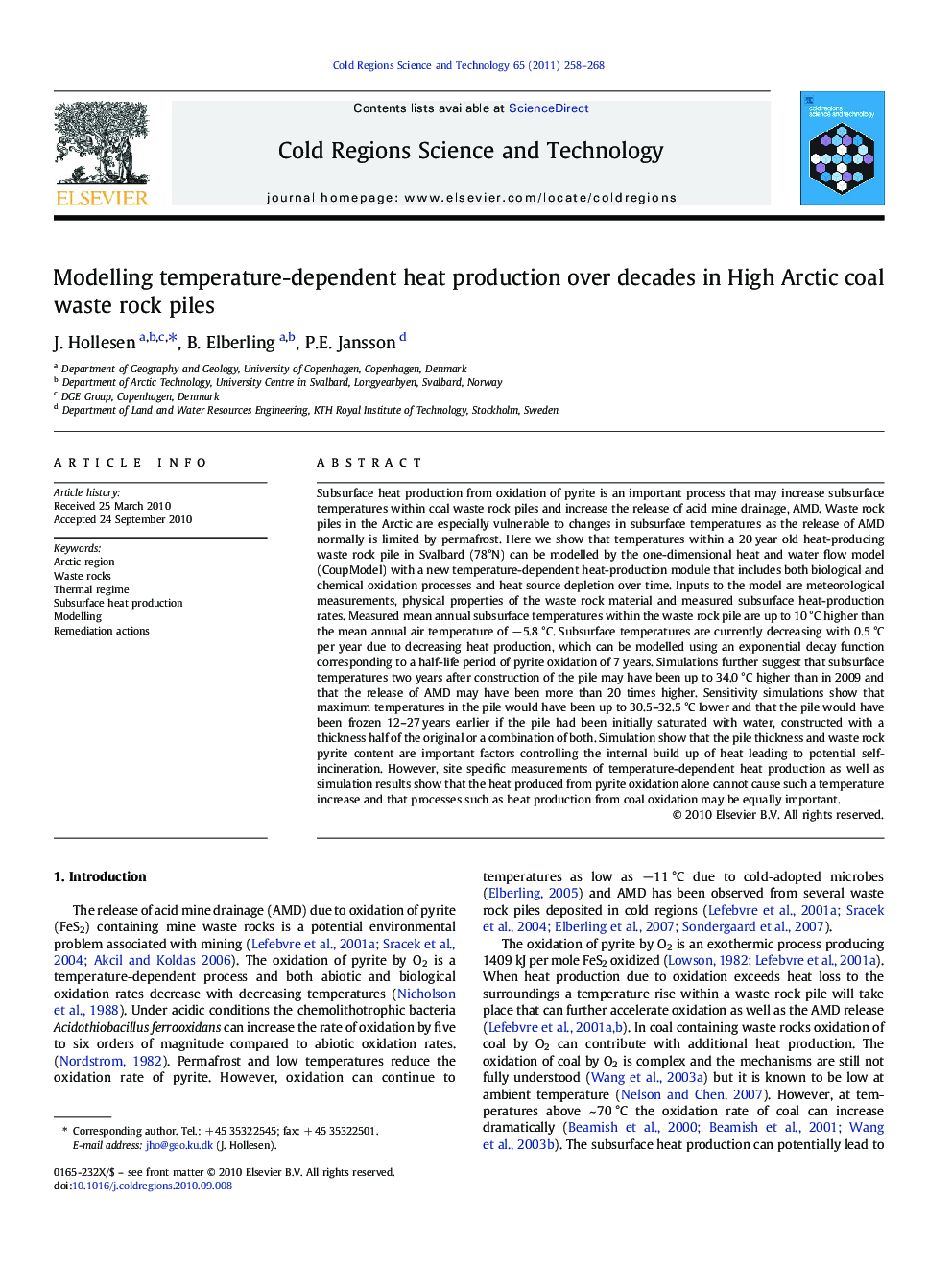| کد مقاله | کد نشریه | سال انتشار | مقاله انگلیسی | نسخه تمام متن |
|---|---|---|---|---|
| 4676172 | 1347740 | 2011 | 11 صفحه PDF | دانلود رایگان |

Subsurface heat production from oxidation of pyrite is an important process that may increase subsurface temperatures within coal waste rock piles and increase the release of acid mine drainage, AMD. Waste rock piles in the Arctic are especially vulnerable to changes in subsurface temperatures as the release of AMD normally is limited by permafrost. Here we show that temperatures within a 20 year old heat-producing waste rock pile in Svalbard (78°N) can be modelled by the one-dimensional heat and water flow model (CoupModel) with a new temperature-dependent heat-production module that includes both biological and chemical oxidation processes and heat source depletion over time. Inputs to the model are meteorological measurements, physical properties of the waste rock material and measured subsurface heat-production rates. Measured mean annual subsurface temperatures within the waste rock pile are up to 10 °C higher than the mean annual air temperature of −5.8 °C. Subsurface temperatures are currently decreasing with 0.5 °C per year due to decreasing heat production, which can be modelled using an exponential decay function corresponding to a half-life period of pyrite oxidation of 7 years. Simulations further suggest that subsurface temperatures two years after construction of the pile may have been up to 34.0 °C higher than in 2009 and that the release of AMD may have been more than 20 times higher. Sensitivity simulations show that maximum temperatures in the pile would have been up to 30.5–32.5 °C lower and that the pile would have been frozen 12–27 years earlier if the pile had been initially saturated with water, constructed with a thickness half of the original or a combination of both. Simulation show that the pile thickness and waste rock pyrite content are important factors controlling the internal build up of heat leading to potential self-incineration. However, site specific measurements of temperature-dependent heat production as well as simulation results show that the heat produced from pyrite oxidation alone cannot cause such a temperature increase and that processes such as heat production from coal oxidation may be equally important.
Journal: Cold Regions Science and Technology - Volume 65, Issue 2, February 2011, Pages 258–268